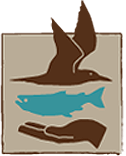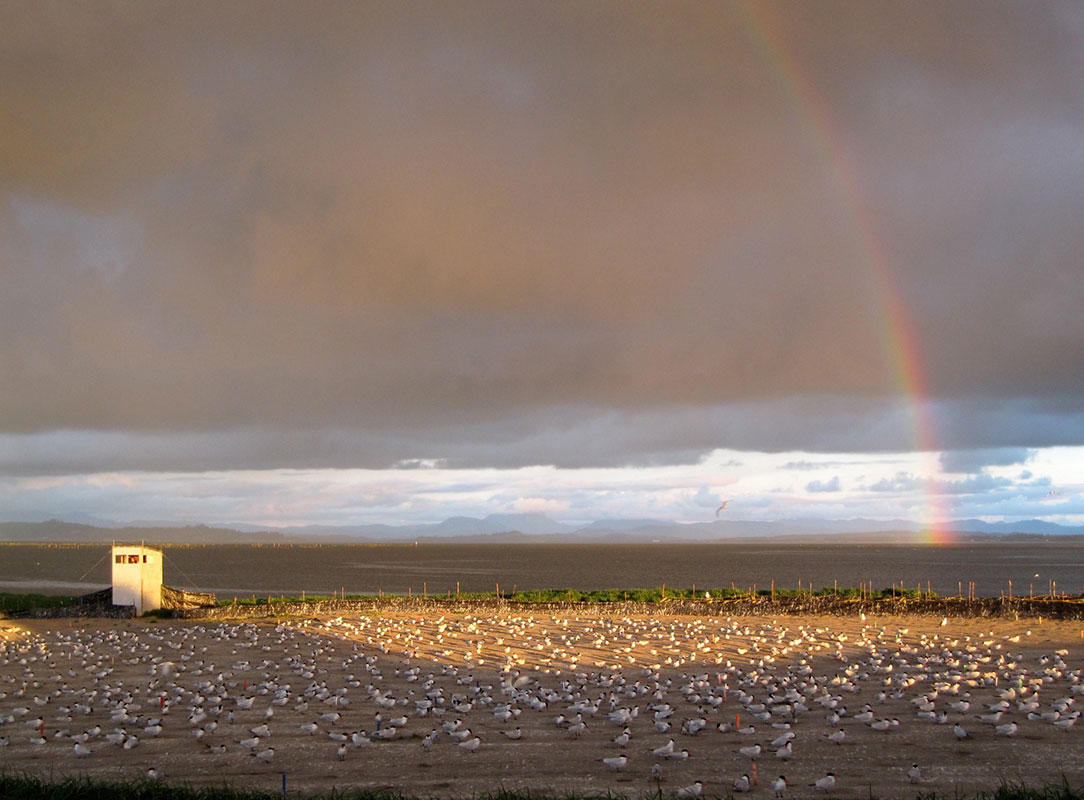 Goose Island is a 4.9 acre, steep-sided rocky island located near the southern end of Potholes Reservoir, near the City of Moses Lake (WA); it is owned by the Bureau of Reclamation (USA) and is managed in cooperation with the Washington Department of Fish and Wildlife. Nesting by Caspian terns on Potholes Reservoir dates back to the early 1980's; Caspian terns nested on a number of different small, low-lying sandy islands within the reservoir during 1982-2009. In 2002, Caspian terns began nesting on Goose Island, where a large gull colony was located. Currently, Goose Island is the only known nesting site for Caspian terns in Potholes Reservoir (487 breeding pairs in 2009). Significant numbers of PIT tags from juvenile salmonids from the mid-Columbia River have been discovered on the Goose Island tern colony, indicating that some terns fly over 30 miles from the nesting colony to forage on the Columbia River. Human disturbance and competition with California gulls for nesting habitat appear to be significant limiting factors for the size of the Goose Island tern colony and its productivity.
Goose Island is a 4.9 acre, steep-sided rocky island located near the southern end of Potholes Reservoir, near the City of Moses Lake (WA); it is owned by the Bureau of Reclamation (USA) and is managed in cooperation with the Washington Department of Fish and Wildlife. Nesting by Caspian terns on Potholes Reservoir dates back to the early 1980's; Caspian terns nested on a number of different small, low-lying sandy islands within the reservoir during 1982-2009. In 2002, Caspian terns began nesting on Goose Island, where a large gull colony was located. Currently, Goose Island is the only known nesting site for Caspian terns in Potholes Reservoir (487 breeding pairs in 2009). Significant numbers of PIT tags from juvenile salmonids from the mid-Columbia River have been discovered on the Goose Island tern colony, indicating that some terns fly over 30 miles from the nesting colony to forage on the Columbia River. Human disturbance and competition with California gulls for nesting habitat appear to be significant limiting factors for the size of the Goose Island tern colony and its productivity.
 Currently, the largest breeding colony of double-crested cormorants on the Columbia Plateau is in the flooded woodland at the north end of Potholes Reservoir in the North Potholes Reserve (ca. 810 breeding pairs in 2009). Cormorants at this colony nest in trees that remain flooded for much of the nesting season. This colony has been increasing in size over the last decade. There is little evidence, however, that these birds commute to the Columbia River to forage on juvenile salmonids, based on the scarcity of salmonid PIT tags near the colony. Great blue herons and great egrets also nest in amongst the cormorants in the North Potholes Reserve.
Currently, the largest breeding colony of double-crested cormorants on the Columbia Plateau is in the flooded woodland at the north end of Potholes Reservoir in the North Potholes Reserve (ca. 810 breeding pairs in 2009). Cormorants at this colony nest in trees that remain flooded for much of the nesting season. This colony has been increasing in size over the last decade. There is little evidence, however, that these birds commute to the Columbia River to forage on juvenile salmonids, based on the scarcity of salmonid PIT tags near the colony. Great blue herons and great egrets also nest in amongst the cormorants in the North Potholes Reserve.



